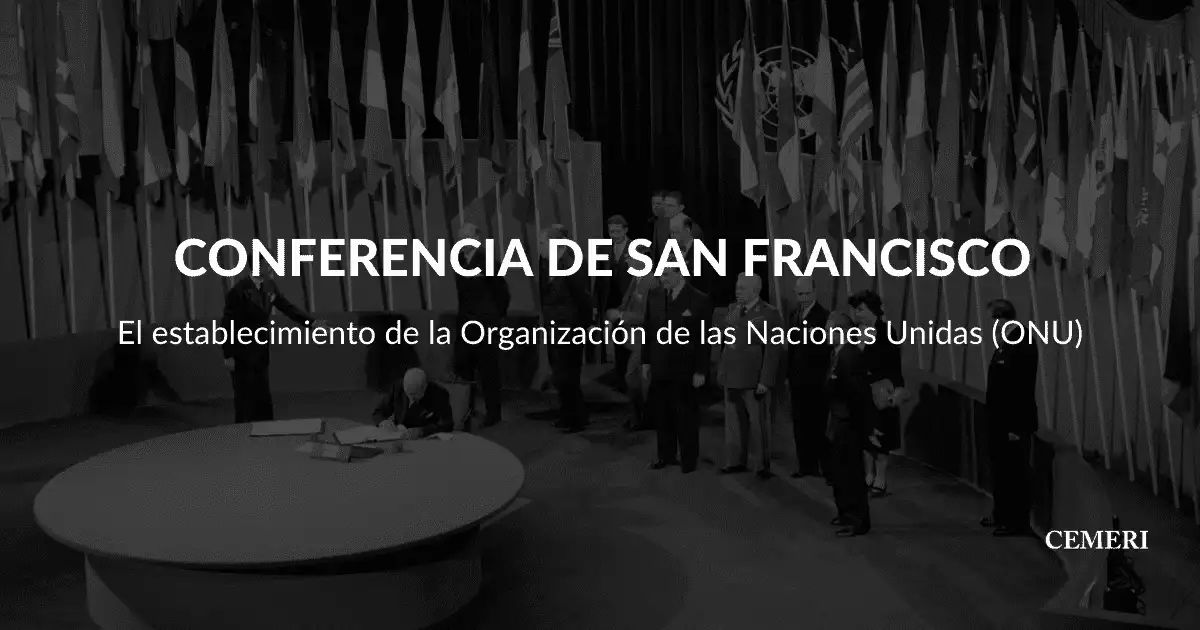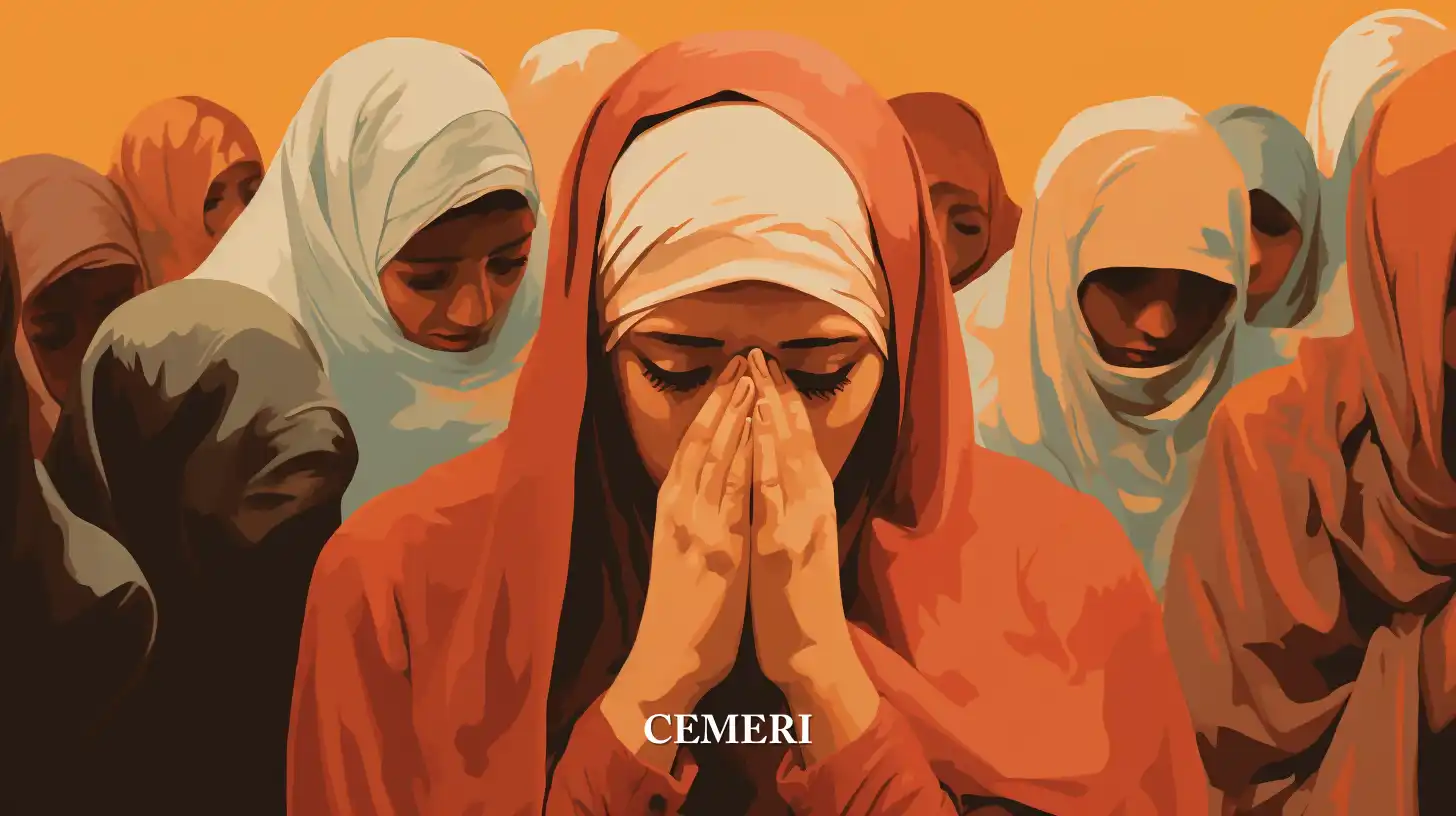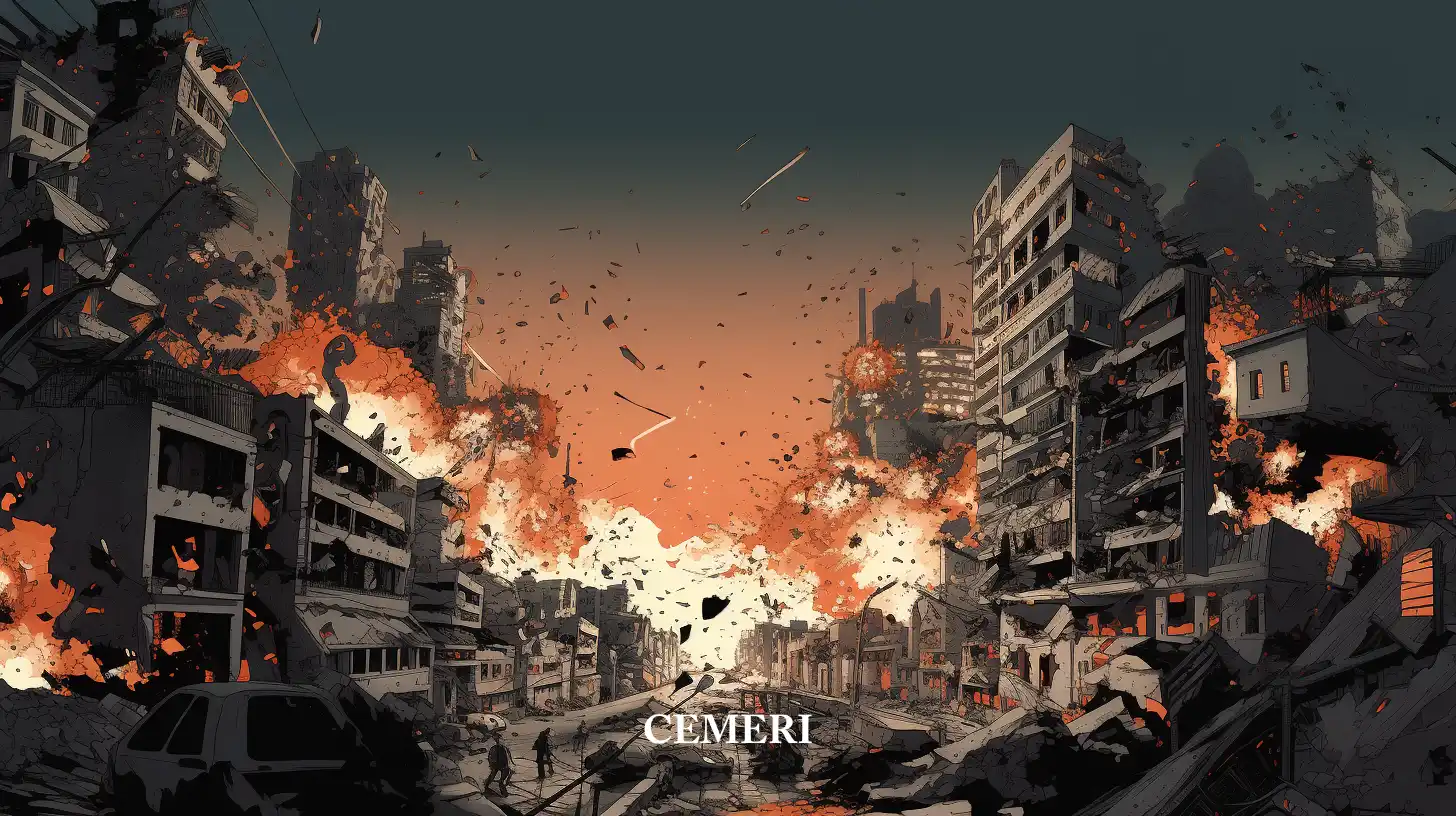Encyclopedia
Marco Olivera
What is the San Francisco Conference?
- It was a convention with representatives of 50 countries, held from April 25 to June 26, 1945 in San Francisco, that established the UN.

The San Francisco Conference, formally the United Nations Conference on International Organization, was a convention with representatives from 50 countries, held from April 25 to June 26, 1945 in San Francisco, which established the United Nations Organization (UN).
While World War II was still raging in the Pacific, the United States, the United Kingdom, the USSR, and China convened a meeting at the San Francisco Opera House to sign the United Nations Charter, as agreed in the Yalta Conference of 1945.
Initially invitations were sent to the governments of the 42 countries that had signed the United Nations Declaration of January 1, 1942, or had endorsed the declaration and declared war on the Axis Powers. The invited countries were Australia, Belgium, Bolivia, Brazil, Canada, Chile, Colombia, Costa Rica, Cuba, Czechoslovakia, the Dominican Republic, Ecuador, Egypt, Ethiopia, Greece, Guatemala, Haiti, Honduras, India, Iran, Iraq, Liberia, Lebanon, Luxembourg, Mexico, the Netherlands, New Zealand, Nicaragua, Norway, Panama, Paraguay, Peru, the Philippines, France, El Salvador, Saudi Arabia, Syria, Turkey, the Union of South Africa, Uruguay, Venezuela and Yugoslavia.
Due to the hostility of the Western powers towards the Polish government, Poland was not invited to the San Francisco Conference. However, on June 23, 1945, at the insistence of the USSR, the conference decided to leave space in the UN Charter for the signature of the representatives of Poland. Thus, Poland became one of the founding members of the Organization.
Summits prior to the San Francisco Conference
Prior to the San Francisco Conference, summits were held in which there were proposals to chart the course of the world once the war was over and, of course, the formation of an organization with worldwide representation.
The Atlantic Charter
At the beginning of the Atlantic Charter, issued by the President of the United States, Franklin D. Roosevelt, and the first UK Minister Winston Churchill included collective security against aggression, economic and social cooperation, self-government of peoples, free navigation of the seas and equal business opportunities.
The United Nations Declaration
Less than a month after the attack on Pearl Harbor, on January 1, 1942, representatives of 26 countries met in Washington where they signed the United Nations Declaration, thus showing their support for the Atlantic Charter.
Moscow Conference
The Moscow Conference, held on October 30, 1943, the United States, the United Kingdom, the USSR, and China recognized the need to establish an international organization for the maintenance of international peace and security. This was the first official step towards the establishment of the United Nations Organization.
Tehran Conference
On December 1, 1943, Churchill, Roosevelt, and Stalin met in Tehran. The Big Three signed a declaration calling for the creation of an international organization designed to promote peace and outlining the countries and roles they would perform on the Security Council.
Dumbarton Oaks Conference
The Dumbarton Oaks Conference (or Washington Talks on the International Organization for Peace and Security), held in August 1944 in a Washington, DC (Dumbarton Oaks) mansion, discussed the composition of the UN; including which states would be invited as members.
The conference was attended by representatives from the United States, the Soviet Union, the United Kingdom, and China. Discussions included the formation of the Security Council and the right of veto to be granted to its permanent members.
Yalta Conference
On February 11, 1945, Churchill, Roosevelt and Stalin met again in Yalta together with their foreign ministers and military leaders to finally decide on the creation of the world organization.
Official agreements reached at the meeting included organizing a conference in April in San Francisco on the proposed world organization, the United Nations (UN). The structure of the same was also considered and the idea of the Security Council was agreed. A UN territorial guardianship (as would also apply to existing League of Nations mandates and territories separated from the enemy as a result of war.
Goals
The San Francisco Conference devoted most of its attention to defining the objectives and principles of the UN, the structure and powers of its main organs. The proposals agreed upon at the 1944 Dumbarton Oaks Conference were accepted as the basis for the draft UN Charter, but the San Francisco Conference modified and expanded on the proposals.
The Conference founded the International Court of Justice, whose statute is an integral part of the UN Charter.
After long debates, the UN Charter was finally adopted. The formal signing was on June 26, 1945. Three months later, on October 24, 1945, after ratification by all permanent members of the Security Council and most other signatory states, the Charter entered into force.
Audience at the opening session of the San Francisco Conference on April 25, 1945.
Photo: UN
What created the Charter of the United Nations
Briefly, the machinery created at the San Francisco Conference consists first of a kind of world legislature, without legislative power over nations, called the General Assembly. It is the broadest representative body of the United Nations. All 50 founding members are represented on it and each has one vote, as will any future admitted nation. Therefore, membership is based on the "sovereign equality" of all states.
The second is an executive body called the Security Council; this is not a higher legislative chamber with powers parallel to those of the General Assembly. It is the arm of the United Nations that is responsible for acting on behalf of the community of nations. Five great powers, the United States, the Soviet Union, the United Kingdom, China, and France, have permanent seats and special voting privileges.
The General Assembly elects six non-permanent member countries for overlapping two-year terms. They are not eligible for immediate re-election when their terms end. The Security Council functions continuously, while the General Assembly meets annually.
Attached to the Security Council is a Staff Committee made up of the Big Five chiefs of staff. It is intended to direct the use of armed forces on behalf of the United Nations against an aggressor. There was no counterpart to this body in the League of Nations.
The third organ of the United Nations is an International Court of Justice. It follows the model of the Permanent Court of International Justice that functioned in The Hague after World War I, with the necessary changes to make the new court an integral organ of the United Nations. Similarly, the fourth branch, the Secretariat, or administrative service of the United Nations, is planned to be very similar to the one that served the League of Nations.
Two new bodies for international cooperation were established in San Francisco. These are the Economic and Social Council and the Trusteeship Council. The former has 18 member countries, serving overlapping three-year terms. Its purpose is to promote economic and social well-being and protect human rights.
The Trusteeship Council, which oversees certain dependent areas of the world, is the successor to the League of Nations' Standing Commission on Mandates. Its members will be the Big Five, any other nation administering trust territories, plus an equal number of non-trustee nations.
Representatives of 50 countries attend the United Nations Conference on International Organization to draft the UN Charter, in San Francisco, California, on April 25, 1945.
Photo: AP
What were the issues faced at the San Francisco Conference?
The San Francisco Conference took place in the midst of sharp controversy, especially over the rights of the Security Council, the voting procedure in the Security Council, the colonies and dependencies, and the purposes of international guardianship.
Membership
The San Francisco Conference faced membership issues of two kinds. First, it had to decide on applications from various countries that wanted to be represented in San Francisco. It then had to determine the rules for admission to the United Nations Organization of those nations that might apply for membership at some later time.
In the first group were Argentina, the Ukrainian SSR, the Byelorussian SSR, Poland and Denmark. Argentina had rushed to declare war on Germany and Japan in order to participate in the San Francisco Conference, but was suspected of still harboring fascist sympathies. His admission was strongly opposed by Russia and supported by Latin American countries and the United States. In a showdown vote, Argentina was admitted.
Stalin had asked at Yalta for separate membership for the Ukrainian and Byelorussian Soviet republics, in addition to that of the Soviet Union, and President Roosevelt and Prime Minister Winston Churchill agreed to them. Since the tangled problem of a mutually satisfactory Polish government for the Big Three had not yet been resolved, Poland was not admitted to the San Francisco Conference, but the way was open for its later accession.
When the conference opened, Denmark was occupied by the Nazis and had no government-in-exile. The country was released during the session, applied for admission and was unanimously accepted. A possible Spanish request was equally unanimously advised against in advance due to the Franco government's close ties to the Axis.
The question of subsequent UN membership involved the neutral nations of the world that were not invited to San Francisco because they were not contributing to the defeat of Germany and Japan. It also involved the former enemy nation, Italy, and the various Axis satellite nations. And finally he was referring to the two main enemies, Germany and Japan.
Big and small states
The basic principles of a world organization that would embrace the political objectives of the Allies were proposed at the Dumbarton Oaks Conference in 1944 and reaffirmed at the Yalta Conference in early 1945.
The next problem arose from the difficulty of reconciling the theory of international law with the facts of international life which consists in the equality of all States, but in reality some are much more powerful and influential than others. The great powers, realizing that they would be responsible for providing the bulk of the military to keep the peace, felt they had the right to decide when, where, how, and if they should be called upon to act. The small States, on the other hand, insisting that they were equally sovereign to the great powers - which in most cases were the aggressors of the small ones - thought that they had the same right to participate and decide on international affairs.
Closely related to this question of whether the great powers should have a larger say in the affairs of international organization was their demand for the right to veto the use of international force against themselves. This demand was based on its position of power and again the small States opposed it.
Some countries, especially Latin American ones, wanted to subordinate the USSR and its allies to a hostile numerical majority and give the General Assembly the same rights as the Security Council. Other countries, such as Australia, Canada and the Netherlands, opposed the principle of unanimity among the permanent members of the Security Council to decide all political questions. These efforts were unsuccessful due to the firm position of the USSR. The principle of unanimity was confirmed.
The Need for Speed
Blitzkrieg -lightning war- was an apt word for the type of sudden and overwhelming attack, launched without warning, that Germany He practiced in World War II. A new word would have to be coined, something faster than lightning, in case another war broke out. Military developments could make it likely that an initial attack would come from greater distances at greater speed and with greater devastation.
If aggression is to be prevented, therefore, the forces used to prevent it must be available for almost instantaneous use. An international organization that can effectively keep the peace against countries that intend to break the peace must be armed and empowered to use force when necessary. However, such a blank check of power in the hands of an international body runs counter to the desire of all nations contributing a portion of the international force to be consulted before it is put to use. Here was another problem that the San Francisco Conference had to solve.
Another problem arose from the existence of three regional mutual aid systems, one in Europe, one in the Arab world, and one in the Americas. The first is the wartime alliance of the United Kingdom, Russia, France, Czechoslovakia and other countries through a network of bilateral treaties that will last for 20 years. The second is the newly created Arab League, and the third is the Pan-American system, reinforced at the Mexico City conference just a few months earlier.
The question here was how to fit these regional security systems into the global security agenda. Should the regional organization step aside when the global organization came on the scene, or should the latter wait until local authorities called for help?
Dependent Areas
The question of what to do with non-self-governing areas or countries without self-government was partly a problem of war. What should be done with the former Italian colonies, the former Japanese mandated islands, and the illegally acquired parts of the Japanese Empire? But it also meant colonial and dependent peoples who had long been under the supervision of one or another of the victorious powers, especially those subjugated nations in Africa and Asia. By the widest possible definition, the problem could be made to include not only the peoples of the Libyan desert and Pacific islands, but also those of the British Raj and the Belgian Congo. Or, at the other extreme, the definition could limit the problem to liberated enemy territory only and mean nothing to the people involved other than a change in colonial administrators.
The San Francisco Conference included in the UN Charter a declaration on the principles by which colonies and dependencies should be treated. All countries at the conference agreed that mandated territories should be included in [the international trusteeship system](https://www.un.org/dppa/decolonization/en/history/international-trusteeship-system-and- trust-territories#:~:text=In%201945%2C%20by%20by%20of,the%20States%20that%20the%20administered.). The Soviet delegation proposed that one of the basic objectives of the guardianship should be to prepare these territories, through the active participation of their peoples, for self-government, self-determination and full independence. This proposal met with objections from the Western powers and was approved only in an attenuated form.
Economic and social issues
War conflicts do not start by themselves; Many people recognize that economic constraints and social pressures are powerful factors that push countries to go to war. A State may or may not have the resources to provide its population with what it needs for its existence and development, but if it sees its existence threatened and believes that other States are denying it these necessary resources, it will go to extremes to ensure its existence. and get the necessary means for his people.
Readjustment, compromise and cooperation between countries in economic and social matters is therefore an imperative requirement for lasting peace. But, normally, States believe that their laws, monetary systems, economic policies and the like are not matters of international interest. How to reconcile the universal desire to avoid war with the almost equally strong desire not to allow any international body to interfere in the internal affairs of states?
Amendments
The final issue in any such organization is whether its constitution should be rigid and relatively immutable, and if so open to amendment. In the first case, it risks becoming obsolete as international relations evolve.
Sources
SIN FUENTES

